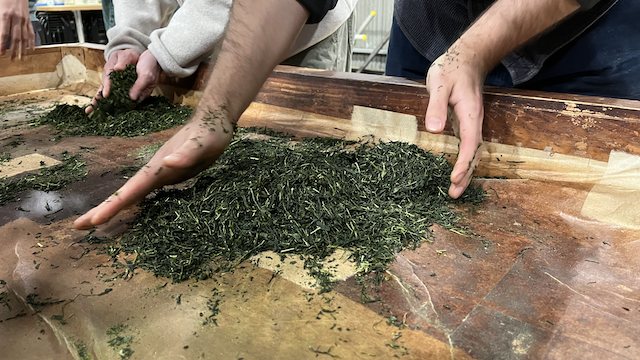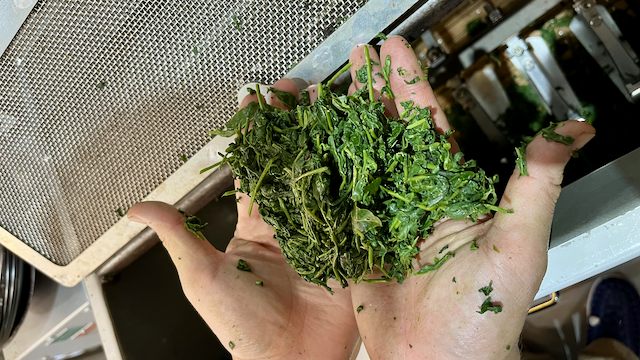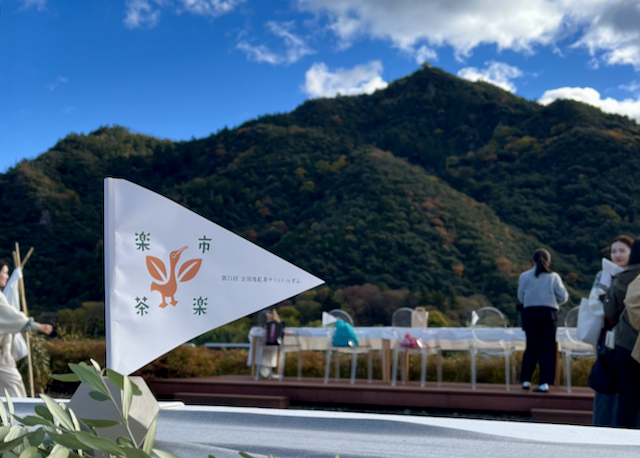2023 November round up
Welcome to this slightly delayed November round-up newsletter. A monthly letter about everything that has happened inside and outside the tea nursery.
Autumn harvest, check!
We have finally wrapped up the autumn harvest. It has been an eye-opening experience. The amount of physical and mental effort required to go to a harvest is immense. We have been moving bags of leaf around the entire day to later process them as bancha at the factory at night. The occasional break from the rain and some days at the weekends. Overall, it has been a great experience in preparation for the spring harvest, where the stakes are much higher. And the workload is even more demanding.
I have been processing quite a few teas under the guidance of highly experienced people. Also had the opportunity to hand roll some tea lately and see how the hand techniques translate on the machines for processing. There have also been great opportunities to meet other farms from Wazuka. And try their tea together and meet with other people involved in tea tourism and research. A November packed with activities and events.

Recent Activity
As you might know, the blog turned 1 last month. I just published a blog post going through what has happened this year and what is on the horizon. As a technology enthusiast, I couldn't help myself and talked perhaps a bit too extensively about the software I use for the blog. Since I published that article, I discovered that a research centre has developed an application to keep track of the weather factors and frost forecast using pretty cool tech, so maybe one day I could fuse those two passions in an article of sorts.
As I introduced in this newsletter, I have been processing plenty of tea during the autumn harvest, and I have learnt a lot about how the hand-rolling techniques translate into the machines for processing tea. I have also started an apprenticeship at a tea shop with its own processing in-house. I am learning more about the processing details, how to process different products and how different cultivars or the work of farmers affect the process of making tea.

What is next
On Saturday, the 2nd of December, I will attend the Japanese Black Tea Summit in Gifu. I will do my best to share some pictures of the event online and perhaps do a small article about it, like the one I did for the moon viewing event. I look forward to meeting new farmers doing cool things with tea, specifically black tea, and meeting with some I already know, like Morihiko Yamamoto from Samurai tea farms in Shizuoka. He recently got an award for his black tea, which is one of my favourites from the master course this summer, and It was amazing. I will make sure to grab some of his tea before it probably sells out again.
PS: I bought a lot of tea there and will probably write a post about the event soon.

Also, on Sunday the 3rd, there is an event in Wazuka with some of its farmers brewing their teas at a local community space. I got notice of the event thanks to the fun way they decided to dress up and promote the event. It looks so much fun.
PS: It was great! So much fun. I finally got to meet some more farmers of Wazuka I hadn't met before. Unfortunately, I forgot to take pictures. Too busy drinking and talking with the farmers.
Books and other fun stuff
This month, I have a couple of papers I discovered while researching for an essay I am working on for University.
First of all, a paper on how the Chinese tea ceremonies influenced Taiwanese and Japanese ceremonies and how those influenced Chinese tea ceremonies back, I found it fascinating.
Zhang, Lawrence. ‘A Foreign Infusion: The Forgotten Legacy of Japanese Chadō on Modern Chinese Tea Arts’. Gastronomica, vol. 16, no. 1, Feb. 2016, pp. 53–62. DOI.org (Crossref), https://doi.org/10.1525/gfc.2016.16.1.53.
Sencond a paper on the lifestyle of Japanese literati painters influenced by the Chinese culture and literati of the time. Although not related to tea directly, there are a couple of references to the sencha ceremony and tea. It gives a great insight into the lifestyle of the artists who gathered around Sencha with like-minded people to share and even sell their works.
Graham, Patricia J. “Lifestyles of Scholar-Painters in Edo Japan.” The Bulletin of the Cleveland Museum of Art, vol. 77, no. 7, 1990, pp. 262–83. JSTOR, http://www.jstor.org/stable/25161293.
That is it for this month. As always, you can help the blog by sharing this newsletter or any of the blog posts and sharing it with a friend or family member who could enjoy it.
